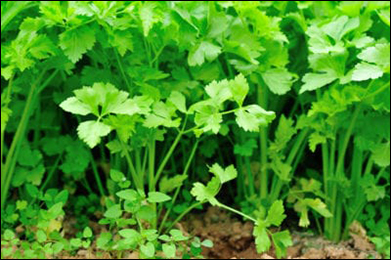What are the Medicinal Properties of Wild Celery (Angelica Archangelica)?

Introduction
Angelica archangelica is the botanical name of the herb Angelica which belongs to the Apiaceae family. This herb has been an important source of food and medicinal plant since centuries. It is native to Norway, Finland and Sweden. Angelica has been used for various medicinal purposes to treat various ailments. It is the biennial and perennial herb and has been cultivated since long time back. Northern Europe is known as its largest cultivator. This plant grows in subtropical climate up to the height of 3 meters. Due to its healing and curing properties, the herb got its name Angelica, angel's herb. Its subspecies are also cultivated sometimes due to their sweet taste, edible stem and scented smell. As it resembles to many of the poisonous species hence only should be used after certain identifications.
General Description
In first year of Angelica's plantation, only leaves are grown while in second year stem also grows which reaches up to height of 2.5 meters. Stems are the main part of the plant which are used for the medicinal preparations. Leaves are originated from small leaflets which are divided into three groups that are again subdivided into three more groups. Leaflets have fine toothed edges. Its flowers are small, yellow greenish in color numerous and found in groups. This plant grows usually near deposits of water, preferably river, in damp soil.
- Common Name - Wild celery, garden angelica
- Botanical Name - Angelica archangelica
- Hindi Name - Chorakabheda
- Family - Apiaceae
Cultivation
Angelica grows wild in Norway, Russia, Sweden, Finland, Greenland, Denmark, Iceland and Faroe islands. Usually the northern parts of these countries are covered by wild celery. For commercial purposes it is cultivated in France, Romania, Hungary, Bulgaria, Poland and Germany.
Phytochemicals
Amazingly essential oils are present in this plant depending upon the age of the roots. Generally terpenes are present in its roots in high amount. Roots are generally preferred for the essential oils but the seeds have more amount. It also consists of Camphene, myrcene, limonene, borneol, caryophyllene, and carvone.
Roots also contain saccharine, glucose, sucrose, oxalic acid, aconitic acid and fumaric acid. Seeds are also rich in fatty oils.
Parts Used
All the parts of the plant can be used for cooking and medicinal purposes. However mostly the roots and seeds are used. Leaves of Angelica are collected in summer before blooming of the plant while its roots are harvested when its bitterness is on the peak, i.e. in winters.
Medicinal Properties of Wild Celery
- Digestive
- Decongestant
- Aids circulation
- Expectorant
- Diaphoretic
- Antiviral
- Anti anxiety
- Antibacterial
- Anti-cancer
- Craminative
Therapeutic Uses of Wild Celery
- Its warming and digestive properties help to relieve the indigestion and stimulate appetite.
- Owing to the carminative properties of Angelica, it helps to relieve excessive accumulation of intestinal gas and bloating.
- Sluggish liver can also be treated by this herb as it possesses stimulant and digestive properties.
- Painful menses and premenstrual syndrome can be treated with the help of Angelica due to the decongesting, relaxing and warming properties.
- As it aids in proper circulation, so it can help in treating migraine and other types of headaches.
- Soothing action of the herb on lungs and decongestant properties help to treat many ailments like asthma, bronchitis, cold, cough and flu.
- Angelica possesses diaphoretic action, i.e. stimulates the sweating, helps to treat high fever and brings the temperature down.
- Gastrointestinal ailments can also be treated by this medicinally potent plant. As Angelica is full of digestive and carminative properties hence it helps to maintain the normal digestion and prevents any ailment related to it.
- Studies suggest that even the herpes simplex virus (HPV) can be cleared off from the body owing to its strong antiviral activities.
- It relieves the anxiety and calms the nerves.
- Anti-colic action of this herb also helps to relieve the pain and provides soothing effect especially in abdominal colic.
- As Angelica improves circulation, it also helps to treat Buerger's disease in which there occurs narrowing of arteries of hands and feet.
- In cancer it counteracts the effects of cancer cells and prevents the spread to other parts of the body. However there are many studies going on to confirm its potential in cancer treatment.
- It also possesses antioxidant effects and hence prevents the oxidative damage to the body by free radicals. This action of the herb also helps to prevent and treat atherosclerosis.
Side-Effects of Wild Celery
Consumption of Angelica herb in large doses can cause toxicity in the body. Its root is much poisonous when fresh and that's why it is dried first before using it. This herb should not be used by pregnant women, breastfeeding women and children below 2 years of age. People having diabetes or intestinal ulcers should not use it.



